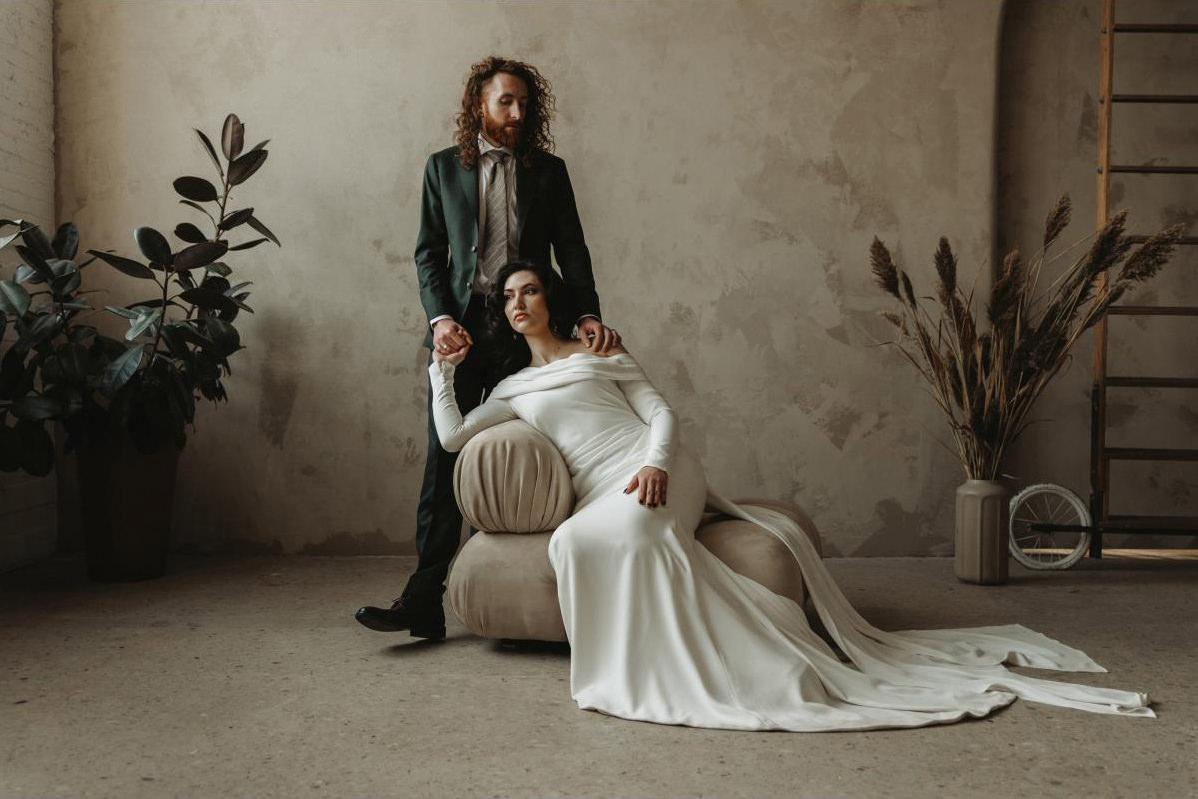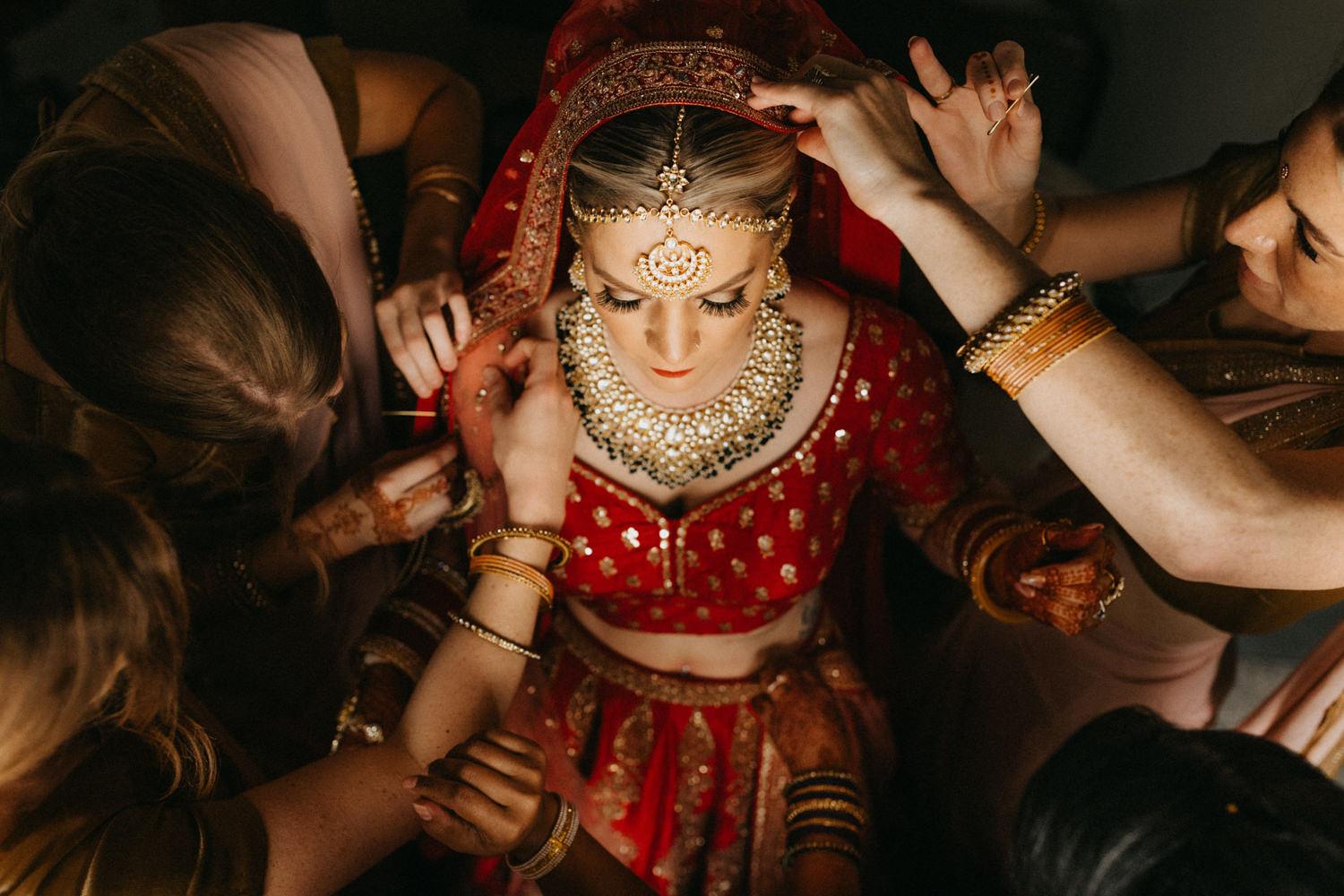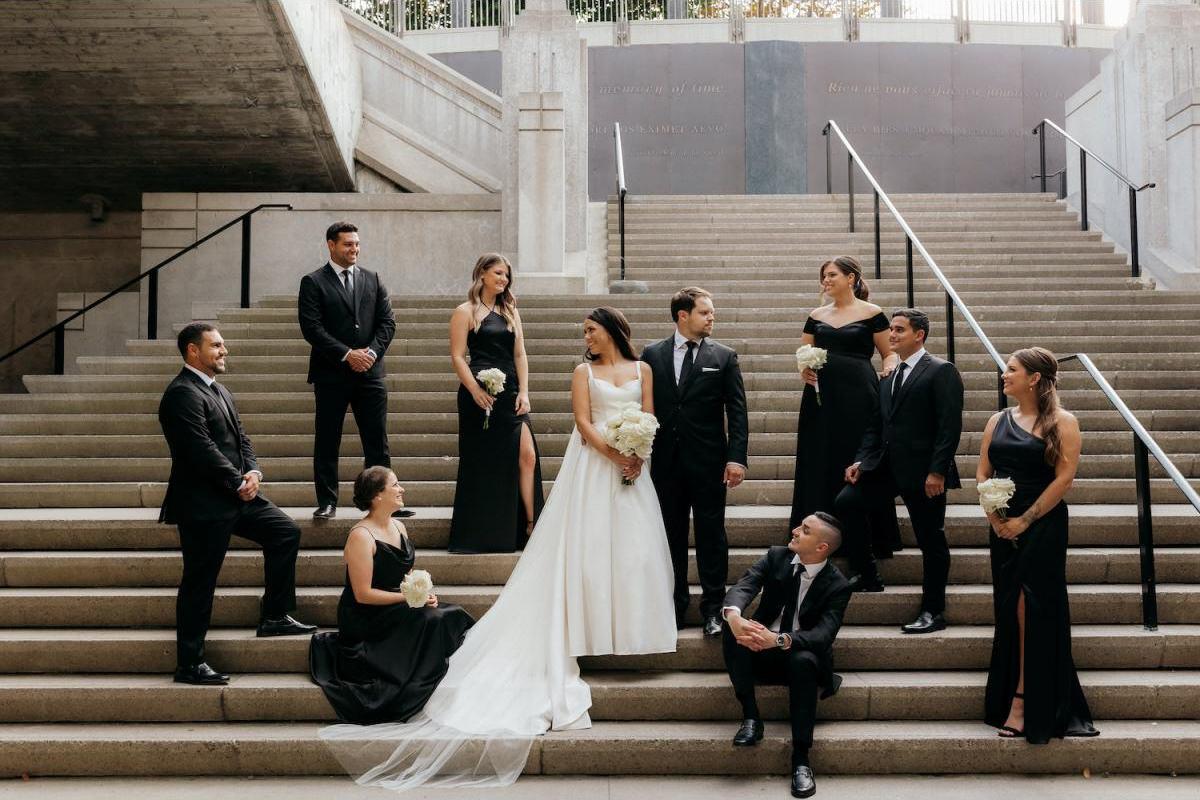Wedding style isn’t just about the dress. From tailored tuxedos to cultural garments and nonbinary fashion, what we wear at weddings reveals who we are—and what we value.
While the wedding dress often takes center stage, the history of what everyone else wears—from grooms to guests to gender-expansive celebrants—is just as rich. Wedding fashion has always been about more than looking good; it’s a mirror of social status, identity, and changing ideas of gender and tradition.

Groom Style: From Tailcoats to Velvet Blazers
Historically, grooms wore their most formal attire, which meant top hats, gloves, and tailored suits.
- Victorian grooms often wore dark tailcoats and cravats—an elegant, somber contrast to the bride's white.
- In the 20th century, the tuxedo became standard, especially after Hollywood glamorized it.
- The 1970s and 1980s saw an explosion of individuality: colored tuxes, wide lapels, and frilly shirts.
- Today, grooms often opt for velvet jackets, bold colors, floral ties, or cultural garments that reflect their heritage.
A groom’s outfit has evolved from a uniform into a reflection of personality—and sometimes, a bold fashion moment of its own.
Bridal Alternatives: Not Every Bride Wears a Gown
Not all brides wear dresses. And they never have.
- Women in the 1930s and 40s, facing economic hardship, often wore smart suits they could reuse.
- Modern brides choose jumpsuits, tailored suits, and two-piece outfits that feel powerful, chic, and unconventional.
- Cultural attire, such as sarees, hanboks, or kimonos, remains integral to many weddings across Canada’s multicultural landscape.
- Nonbinary and gender-diverse individuals are rejecting gendered expectations altogether, designing custom outfits that feel true to them.
Fashion is now about fit—not conformity.
The Role of Culture in Wedding Attire
Canada’s wedding scene is deeply multicultural, and wedding fashion often reflects cultural pride.
- Indigenous regalia may include beaded garments, ribbon skirts, or woven blankets.
- South Asian grooms may wear embroidered sherwanis with mojaris, while brides wear lehengas or sarees.
- Jewish weddings may involve kippahs, tallit, or modesty attire based on religious customs.
- African diaspora couples may incorporate Ankara prints or headwraps into contemporary wedding fashion.
Cultural expression through fashion is not just beautiful—it’s an act of preservation and pride.

The Rise of Nonbinary, Inclusive, and Custom Fashion
In the past decade, the wedding industry has become (slowly) more inclusive. Designers are finally offering:
- Gender-neutral suits and dresses
- Mix-and-match separates for all bodies
- Custom tailoring for transgender, nonbinary, and queer clients
More couples are opting for attire that reflects their identity rather than tradition. And photographers are documenting weddings that feel not only beautiful—but honest.
Wedding Fashion and Photography: The Visual Language of Style
For photographers, wedding fashion is a key visual thread. Every fabric, silhouette, and accessory tells a story:
- A crisp lapel and cufflink detail may say “timeless sophistication.”
- A bold patterned suit may reflect joy and creative freedom.
- Cultural garments connect the couple to their ancestry—and create powerful portraiture.
Great wedding photographers document more than clothes. They document identity.

Related Reading in the History of Weddings Series:
- The History of the Wedding Dress
- The History of the Wedding Veil
- The History of Wedding Symbols and Colours
- Wedding Traditions from Around the World
Continue Planning Your Wedding
Ready to dive into the details? How to Find the Perfect Wedding Photographer: The Ultimate Guide to Making the Right Choice